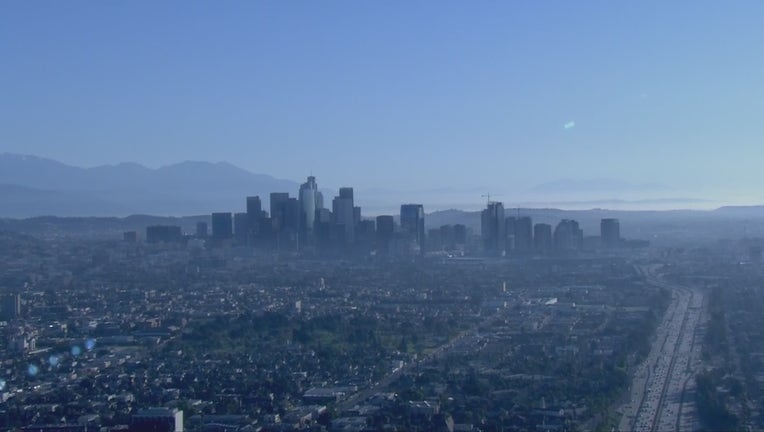Local lockdowns brought fast global ozone reductions: NASA

PASADENA, Calif. - As the coronavirus pandemic slowed global commerce to a crawl in early 2020, emissions of nitrogen oxides -- which create ozone, a danger to human health and climate -- decreased 15% globally, with local reductions as high as 50%, according to a study published today, led by scientists at NASA's Jet Propulsion Laboratory.
As a result of the lower NOx emissions, by June 2020, global ozone levels had dropped to a level that policymakers thought would take at least 15 years to reach by conventional means, such as regulations.
The study shows that innovative technologies and other solutions intended to decrease NOx locally have the potential to rapidly improve air quality and climate globally. It was published Wednesday in Science Advances.
RELATED: Coronavirus lockdown results in 30 percent air pollution drop in northeastern US, NASA says
Ozone protects us from destructive solar radiation when it's high above Earth in the stratosphere. Closer to the ground, though, it has other lasting impacts. Ozone at the surface was estimated to cause 365,000 deaths globally in 2019 by damaging the lungs of vulnerable people, such as young children and those with asthma. Similarly, it damages the breathing systems of plants -- their ability to photosynthesize -- reducing plant growth and crop yields. And at the top of the troposphere, it's a potent greenhouse gas, increasing global temperatures.
Get your top stories delivered daily! Sign up for FOX 11’s Fast 5 newsletter. And, get breaking news alerts in the FOX 11 News app. Download for iOS or Android.
When the world went into lockdown, scientists had an unprecedented opportunity to study how human activity interacts with natural Earth system processes at regional and global scales. A team of international researchers led by JPL scientist Kazuyuki Miyazaki used this opportunity to research the two main oxides of nitrogen: nitrogen oxide and nitrogen dioxide, collectively called NOx. They charted the chain of events from reduced fossil fuel burning during lockdowns to reduced local NOx emissions and finally to reduced global tropospheric ozone pollution.
The more stringent the lockdown a nation imposed, the greater the reduction in emissions. For example, China's stay-at-home orders in early February 2020 produced a 50% drop in NOx emissions in some cities within a few weeks; most U.S. states achieved a 25% drop later in the spring.
The total result of the reduced NOx emissions was a 2% drop in global ozone -- half the amount that the most aggressive NOx emission controls considered by the Intergovernmental Panel on Climate Change, the authoritative body of international experts on climate, were expected to produce over a 30- year period.
Ozone reductions from the reduced NOx emissions quickly spread both around the globe and from the surface upward more than six miles -- 10 kilometers.
"I was really surprised at how large the impact on global ozone was," said JPL scientist Jessica Neu, a co-author of the new study. "We expected more of a local response at the surface."
The reactions that transform NOx into ozone require sunlight and depend on many additional factors, such as weather and other chemicals in the air. These factors interact in so many ways that, in some circumstances, reducing NOx emissions actually increases ozone. So researchers cannot fully understand or accurately predict ozone concentrations from NOx emissions data alone. That requires a more thorough analysis, like this study, Neu said.

